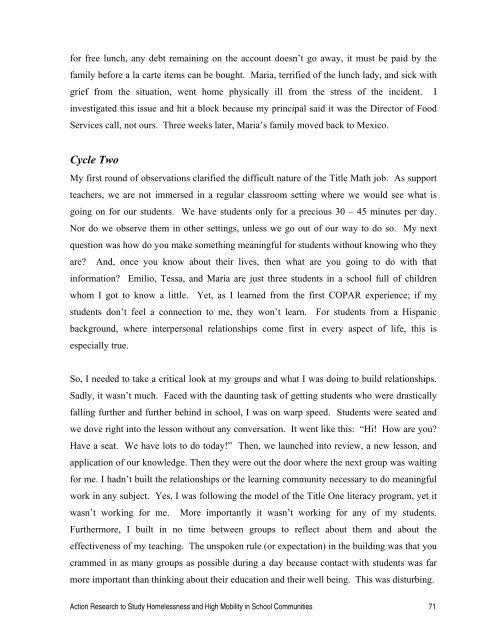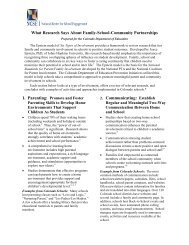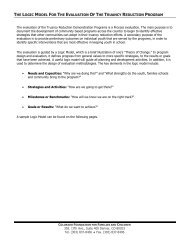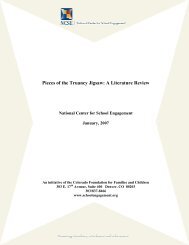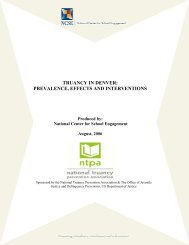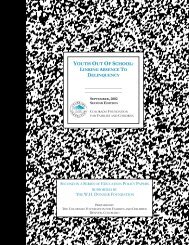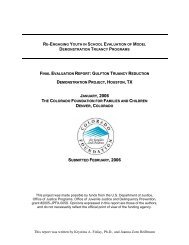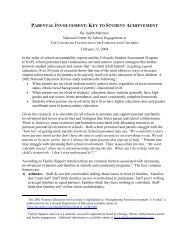Section 1: Academic Achievement - National Center for School ...
Section 1: Academic Achievement - National Center for School ...
Section 1: Academic Achievement - National Center for School ...
Create successful ePaper yourself
Turn your PDF publications into a flip-book with our unique Google optimized e-Paper software.
<strong>for</strong> free lunch, any debt remaining on the account doesn’t go away, it must be paid by the<br />
family be<strong>for</strong>e a la carte items can be bought. Maria, terrified of the lunch lady, and sick with<br />
grief from the situation, went home physically ill from the stress of the incident. I<br />
investigated this issue and hit a block because my principal said it was the Director of Food<br />
Services call, not ours. Three weeks later, Maria’s family moved back to Mexico.<br />
Cycle Two<br />
My first round of observations clarified the difficult nature of the Title Math job. As support<br />
teachers, we are not immersed in a regular classroom setting where we would see what is<br />
going on <strong>for</strong> our students. We have students only <strong>for</strong> a precious 30 – 45 minutes per day.<br />
Nor do we observe them in other settings, unless we go out of our way to do so. My next<br />
question was how do you make something meaningful <strong>for</strong> students without knowing who they<br />
are? And, once you know about their lives, then what are you going to do with that<br />
in<strong>for</strong>mation? Emilio, Tessa, and Maria are just three students in a school full of children<br />
whom I got to know a little. Yet, as I learned from the first COPAR experience; if my<br />
students don’t feel a connection to me, they won’t learn. For students from a Hispanic<br />
background, where interpersonal relationships come first in every aspect of life, this is<br />
especially true.<br />
So, I needed to take a critical look at my groups and what I was doing to build relationships.<br />
Sadly, it wasn’t much. Faced with the daunting task of getting students who were drastically<br />
falling further and further behind in school, I was on warp speed. Students were seated and<br />
we dove right into the lesson without any conversation. It went like this: “Hi! How are you?<br />
Have a seat. We have lots to do today!” Then, we launched into review, a new lesson, and<br />
application of our knowledge. Then they were out the door where the next group was waiting<br />
<strong>for</strong> me. I hadn’t built the relationships or the learning community necessary to do meaningful<br />
work in any subject. Yes, I was following the model of the Title One literacy program, yet it<br />
wasn’t working <strong>for</strong> me. More importantly it wasn’t working <strong>for</strong> any of my students.<br />
Furthermore, I built in no time between groups to reflect about them and about the<br />
effectiveness of my teaching. The unspoken rule (or expectation) in the building was that you<br />
crammed in as many groups as possible during a day because contact with students was far<br />
more important than thinking about their education and their well being. This was disturbing.<br />
Action Research to Study Homelessness and High Mobility in <strong>School</strong> Communities 71


